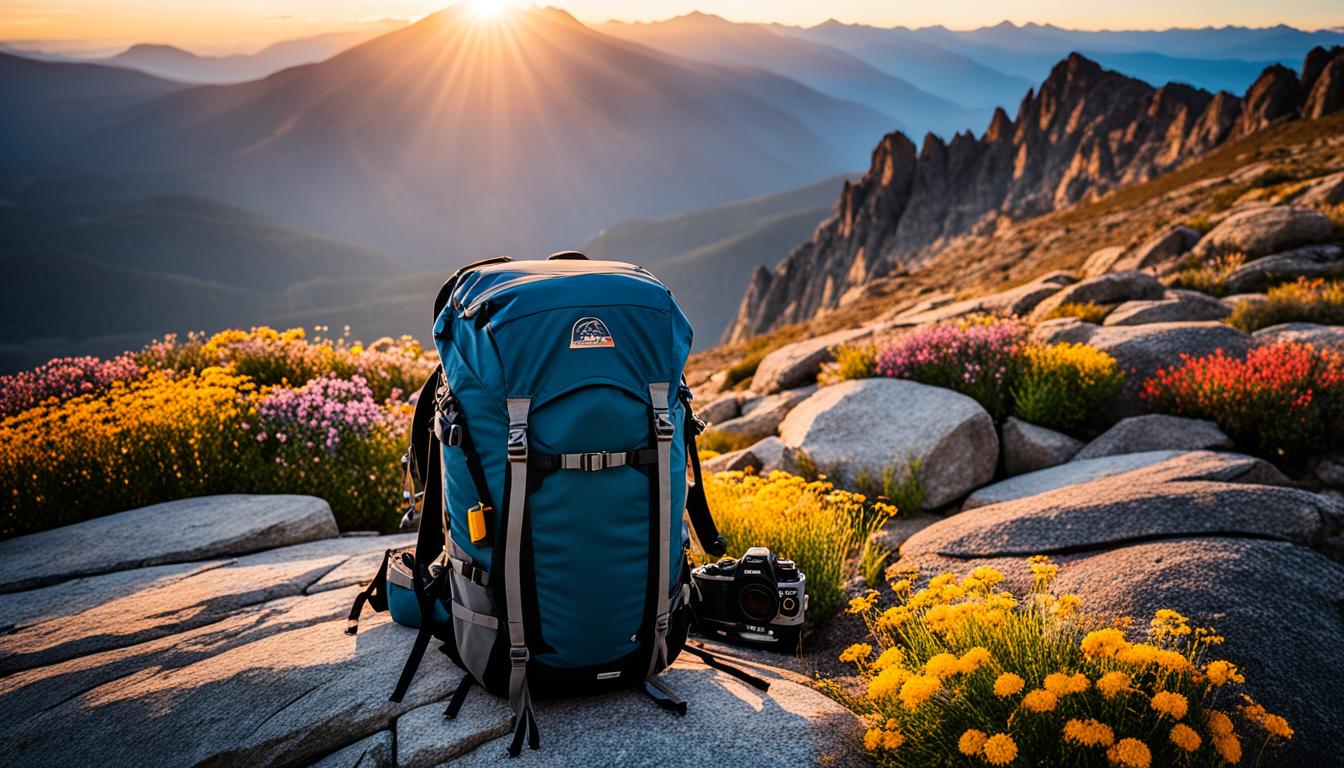Picture this: you’ve been saving up for months, eagerly anticipating your dream vacation. You’ve scoured the internet for affordable travel options and snagged the best travel deals and travel discounts. Finally, the day arrives, and you’re all packed and ready to go. But little do you know, a single mistake in your packing is about to cost you hundreds of dollars.
Meet Sarah, an avid traveler who prides herself on finding affordable vacations. She’s always on the lookout for budget travel tips and tricks to make her journeys more budget-friendly and enjoyable. On her latest adventure, she packed her suitcase with enthusiasm, confident that she had checked every box on her travel on a budget checklist.
As Sarah arrived at the airport and approached the check-in counter, she was hit with a shocking revelation. The clerk informed her that her cheap travel plans had just taken an unexpected turn. Due to her poor packaging choices, Sarah’s suitcase exceeded the weight limit, resulting in an exorbitant fee.
It turns out Sarah had made the all-too-common mistake of using inappropriate packaging options and incorrect packaging sizes. Her oversized box was filled with excessive packaging materials, adding unnecessary weight and cost to her journey.
As Sarah watched her hard-earned money drain away, she vowed to never make the same mistake again. And you shouldn’t either.
Key Takeaways:
- Avoid inappropriate packaging choices to reduce waste and costs.
- Use correct packaging sizes to diversify your options.
- Avoid excessive void fill to prevent wastage and damage.
- Stick to the required amount of packaging materials to avoid unnecessary expenses.
- Consider implementing automation strategies to save time and reduce labor costs.
Using Inappropriate Packaging Choices
When it comes to packaging, many businesses make the mistake of using the same type of packaging, such as boxes, without considering the specific needs of their products. This can lead to wastage and unnecessary costs. So, why not break free from the box and explore more appropriate packaging options?
By choosing packaging materials that align with your product’s requirements, you can not only reduce packaging wastes but also optimize your packaging costs. For example, fragile items may benefit from padded envelopes or bubble wrap, while bulky products might require corrugated cardboard or foam padding.
Take a look at the following table to explore some alternative packaging choices:
| Product Type | Recommended Packaging |
|---|---|
| Electronics | Antistatic bags |
| Perishable Goods | Insulated coolers |
| Apparel | Poly mailers |
| Fragile Items | Air-filled cushioning |
It’s important to remember that embracing diverse packaging options not only helps reduce waste but also adds a touch of personalization to your shipments. So, don’t be afraid to think outside the box – your products and your budget will thank you!
Using Incorrect Packaging Sizes
When it comes to packaging, size matters. And one common mistake that many businesses make is using boxes that are just too big for their products. Not only does this result in wasted space, but it also leads to unnecessary expenses. So how can you avoid this costly blunder?
Match your packaging size to your product size. It’s as simple as that. By choosing packaging that perfectly fits your products, you’ll diversify your options and prevent those extra expenses from piling up.
Consider using multi-depth boxes, which can accommodate products of varying heights. This way, you’ll have the flexibility to pack different sizes without having to stock up on multiple box sizes. It’s a smart and cost-effective solution for businesses that deal with products of diverse dimensions.
Remember, diverse packaging options can save you money and optimize your resources. So think outside the box, or rather, think about the right box size for your products!
Using Excessive Void Fill
When it comes to packaging, finding the right balance is key. Using too much or too little void fill can cause a whole host of problems and extra costs. Let’s dive into the dos and don’ts of void fill to ensure your packaging is on point.
Why Excessive Void Fill is a Problem
Using excessive void fill, like packaging material such as bubble cushion, packing paper, or packing peanuts, might seem like a good idea to protect your products. However, it can lead to wastage of materials, increased box weight, and even potential damage to your valuable items.
Not only is excessive void fill wasteful, but it also adds unnecessary costs to your packaging process. Buying excessive amounts of packing material might mean spending more money initially, and the additional weight can ramp up shipping costs too.
So, how can you strike the right balance and ensure your products are protected without going overboard with void fill?
Tips to Avoid Excessive Void Fill
- Choose the appropriate packaging material: Select packaging materials that are specifically designed for void fill, such as bubble cushion or packing paper. These materials provide cushioning and stability without the need for excessive amounts.
- Add just enough extra material: Instead of filling the entire box with void fill, focus on adding just enough material to prevent movement during transit. This will keep your items secure without going overboard.
- Optimize box sizes: Using appropriately-sized boxes can also help minimize the need for excessive void fill. Consider using multi-depth boxes that can accommodate products of varying sizes without wasting extra space.
By following these tips, you can strike the perfect balance between protecting your products and avoiding excessive void fill. Remember, less is often more when it comes to packaging materials.
Caption: Using appropriate void fill, like bubble cushion, can protect your products without going overboard.
Using Excessive Packaging Materials
When it comes to packaging, less is often more. Yet, some businesses just can’t resist going overboard with excessive packaging materials. They go wild with packing tape, layer on oversized bubble cushion, and wrap every item as if it’s made of glass.
But here’s the thing, all that extra padding doesn’t provide any extra protection. It only adds unnecessary costs to your packaging process. So, it’s time to rein it in and get smart about your packaging choices.
Instead of drowning your packages in tape, opt for quality packaging tape that gets the job done without going over the top. Secure your boxes, but don’t turn them into a mummy’s tomb.
And speaking of bubble cushion, size matters. Don’t use oversized bubble cushion that takes up unnecessary space. Instead, choose appropriately-sized containers that snugly fit your products, with just the right amount of bubble cushion to prevent breakage. Trust me, your packages will thank you for it.
Case Study: Memory Card Packaging Done Right
Let’s take a moment to appreciate the genius of a well-packaged memory card. When you open the package, you’re greeted with a sleek and compact design. No excessive materials, no wasted space. It’s a minimalist’s dream.
The memory card is snuggly held in place, protected by just the right amount of bubble cushion and fitted perfectly within a small, sturdy box. It’s a packaging masterpiece that showcases that less is indeed more.
“Our customers love the simplicity of our memory card packaging. It’s clean, efficient, and eco-friendly. Plus, it saves us money on unnecessary materials. It’s a win-win!” – Jane Miller, Co-founder of MemoryTech
So, take a page from the memory card playbook and apply the same minimalist approach to your packaging. You’ll save costs, reduce waste, and impress your customers with your eco-friendly choices.
Not Implementing Automation Strategies
Are you still manually packing your products? It’s time to embrace automation and revolutionize your packaging process. Manual packing can be tedious, time-consuming, and can significantly impact productivity. By implementing automation strategies, you can save time, reduce labor costs, and streamline your operations.
“Automation is not about replacing humans; it’s about making their jobs more efficient.” – Elon Musk
One of the most effective automation strategies is the use of devices or machines for labeling and sealing. These tools not only speed up the packing process but also ensure accuracy and consistency. Imagine the time and energy you can save by eliminating the need for manual labeling and sealing.
Automation also allows you to optimize your workflow and allocate your resources more efficiently. By reducing the reliance on manual labor, you can redirect your staff’s efforts towards more value-added tasks, such as quality control and customer service.
Saving Time and Money
Implementing automation strategies can lead to significant cost savings. While there may be an initial investment involved, the long-term benefits far outweigh the expenses. Let’s take a look at some of the ways automation can enhance productivity and reduce expenses:
| Benefits of Automation Strategies | Savings |
|---|---|
| Increased packing speed | Time of your staff |
| Reduced labor costs | Wages and benefits |
| Improved accuracy | Costs of returns and errors |
| Enhanced workflow efficiency | Operational costs |
By automating your packaging process, you can achieve higher productivity, lower expenses, and ultimately, boost your bottom line.
“Automation provides us with a comfortable life, but it also creates new forms of work.” – Bill Gates
Don’t let outdated manual packing methods hold you back. Embrace automation strategies, and propel your business into the future of packaging. Automating your processes will not only save you time and money but also help you stay ahead of the competition. Maximize efficiency, optimize resources, and watch your productivity soar.
Ignoring Dimensional Weight
When it comes to shipping, you gotta pay attention to the dimensions, my friend. Delivery services ain’t just concerned about the weight anymore. They wanna know how much space your package takes up. That’s where dimensional weight comes into play.
See, carriers charge based on the larger value between the actual weight and the dimensional weight. And if you ignore dimensional weight, well, get ready to wave goodbye to your precious shipping budget.
Now, you might be wonderin’, how the heck does dimensional weight work? It’s pretty simple, really. They take into account the size of your package by calculating the length, width, and height. Then they use a specific formula to determine the dimensional weight.
Let me give you a little formula 101: Length x Width x Height divided by a dimensional weight factor. That factor varies depending on the carrier and the units you’re using, but you get the idea.
“But why should I care?” you ask. Well, my friend, ignoring dimensional weight can eat up your shipping budget faster than a hot dog eating contest. So, unless you’ve got money to burn, pay attention to the size of your packages.
Now, ain’t it time for a little example? Let me show you how dimensional weight can sneak up on ya:
| Package | Dimensions | Weight | Dimensional Weight |
|---|---|---|---|
| Package 1 | 12″ x 6″ x 8″ | 2 lbs | 1 lb |
| Package 2 | 18″ x 12″ x 10″ | 5 lbs | 10 lbs |
| Package 3 | 24″ x 18″ x 16″ | 10 lbs | 22 lbs |
Take a look at Package 2 and Package 3. Despite the higher actual weight of Package 3, its dimensional weight is what really counts. Carriers will charge based on that whopping 22 lbs, my friend!
So, before you go shipping out those oversized boxes, always remember to consider dimensional weight. It can save you from some seriously unexpected costs and keep that shipping budget intact.
Don’t let your shipping budget weigh you down!
Conclusion
So, you’re ready to embark on your next adventure and make your travel experience more affordable. By avoiding common packing mistakes, you can save money and reduce waste along the way.
First, choose appropriate packaging options that cater to the specific needs of your items. Don’t just settle for standard boxes – consider diverse packaging choices that can minimize costs and prevent unnecessary waste.
Next, ensure that you use the correct packaging sizes. Using boxes that are too big not only wastes space but also adds unnecessary weight to your luggage. Opt for packaging solutions like multi-depth boxes that accommodate your items’ varying heights, maximizing efficiency and minimizing expenses.
Another important aspect to consider is the amount of packaging material you use. Avoid going overboard with void fill, packing tape, or oversized bubble cushion. Instead, use just enough to protect your items during transit without unnecessary costs.
You can also implement automation strategies to streamline your packing process. Embrace technologies and devices that can label and seal your packages efficiently, saving you time and reducing labor costs.
Lastly, always keep dimensional weight in mind. Understanding how shipping costs are calculated based on the size of your package can help you plan your shipping budget effectively and avoid unexpected expenses.
By applying these tips and tricks, you’ll be well on your way to affordable travel with smart packing choices that save you money, reduce waste, and add extra convenience to your journey.










